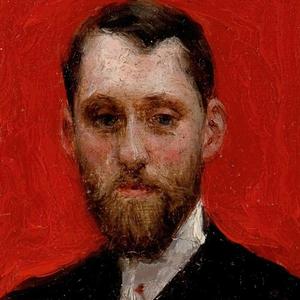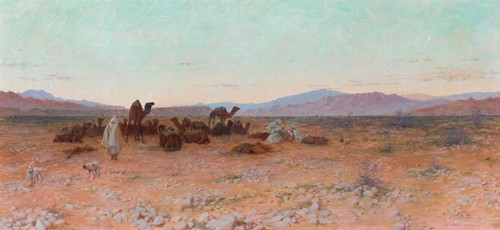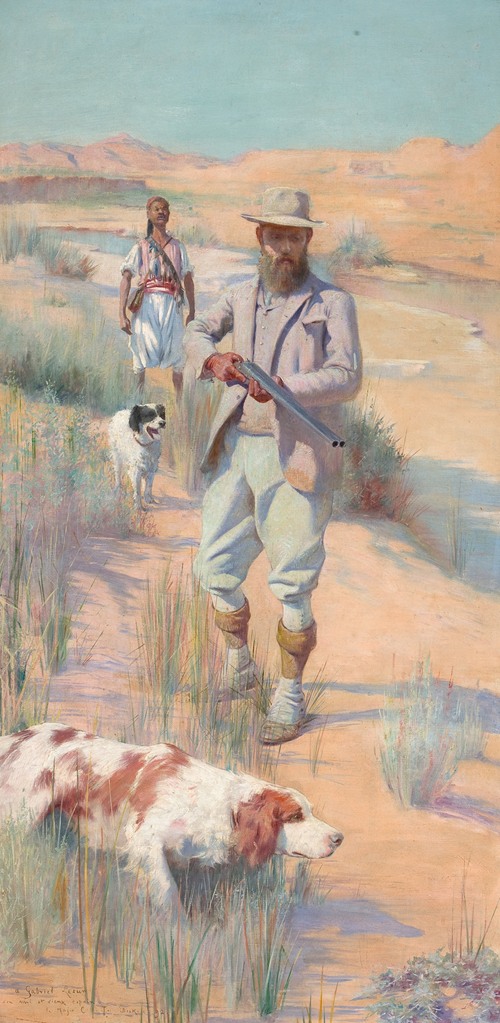

Born in New York, Charles James Theriat (1860-1937) accompanied his family to Europe when he was twelve. He began his artistic training at the Academie Julian in Paris in 1880, studying with Jules-Joseph Lefebvre (1836-1911) and Gustave-Clarence-Rodolphe Boulanger (1824-1888) until 1885. The following year he made his public debut by exhibiting at the Paris Salon. He occasionally painted portraits, domestic genre interiors, and city views, particularly the canals of Venice, but North Africa fascinated him most, especially Algeria, where he first wintered in 1888. Theriat’s plein-air scenes depicted Bedouin encampments, herdsmen tending their goats, and hunters on their steeds, life in oasis towns, presenting the desert with little, if any, human or animal life.
He exhibited his Algerian paintings at most of the major international exhibitions at the turn of the century: 1893 in Chicago, 1895 in Berlin, 1896 in Dresden, 1900 in Paris, 1901 in Buffalo, and 1904 in St. Louis, winning medals at the Paris and Buffalo expositions. He never became a regular exhibitor at any American or European institution, and his most active period as an exhibiting professional artist was the fifteen years after he completed his training. By 1896, he had retired to Le Mèe, near Melun, a quiet place not far from Barbizon and the Forest of Fontainebleau. He continued, however, to visit North Africa until the outbreak of World War I. Theriat remained in France during the War and was made a chevalier in the Legion of Honor for his services as a captain in the American Red Cross. He died at Neuilly-sur-Seine.

